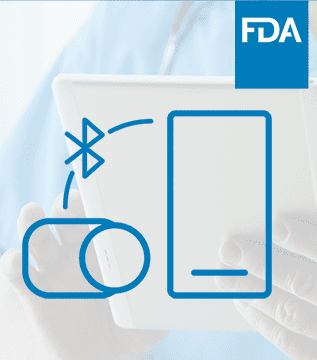This post was previously on the Pathfinder Software site. Pathfinder Software changed its name to Orthogonal in 2016. Read more.
Navigating UX through an FDA Environment
Amy Willis brings years of field experience to her current role as Director of User Experience and Visual Design at Orthogonal. As part of her responsibilities in this position, she’s learned how to navigate user experience testing within FDA regulations, how UX and FDA interact and how mutually beneficial their relationship can be.

Working in an FDA environment can add its own set of challenges to any project or development process, particularly when it comes to incorporating user experience testing into product design and development. But not all aspects of the FDA’s requirements are cumbersome, or completely different from the goals of user experience testing.
“I think that, to a large extent, when you look at the FDA requirements, particularly as they pertain to the UX realm, they’re basically requiring standard UX best practices,” says Willis. “There’s a lot of language around what the FDA calls human factors testing, which, in the world of UX, is referred to as user research.”
The FDA is looking to assure that a medical device is safe and effective for its intended use or uses. Basically, the FDA requires that companies test products with potential users from the intended user group, which is also a fundamental principle of user experience. From a user experience standpoint, developers want to know how a product will work in a real-world environment, with the intended user groups. The results of such trials provide invaluable information to the development and design team.
The fundamentals of FDA and user experience are in sync regarding the importance of real-world testing. However, issues arise around the testing of consumer-based products seeking FDA approval in real-life situations without causing undue harm to the participants. It’s easy to create controlled environments to simulate the use of a hospital-based product or application, but how do companies determine appropriate user testing for consumer-based applications and products that are not intended to be used in controlled environments, like a hospital or lab?
Willis notes that this issue continues to be a conundrum for companies following FDA regulations and user testing guidelines and that the issue will continue to expand along with the trend for more and more consumer-based applications.
New trends currently on Orthogonal’s radar include the creation of apps that revolve around some of the changes to healthcare laws, particularly one under which hospitals will be penalized for high readmission rates. To combat this issue, companies are looking to create apps that facilitate continued communication and care for recently discharged hospital patients and their doctors. The goal is to help patients continue their post-hospital care (from refilling prescriptions to attending follow-up appointments) and provide a way for them to communicate with doctors and nurses to ensure proper healing, report any issues or complications, etc.
Another new trend which follows the societal shift toward more consumer-based products is the development of smartphone-based apps that allow users to record daily medication doses, reactions, interactions, and effects. Orthogonal recently created an app to help parents of children with ADD and ADHD. The program allows parents to record, in real-time, the effects of medications on their children. Is the dosage effective? Are there side effects? Does the medication wear off during the day? By logging and noting issues that arise on a daily basis, parents are able to share more detailed and accurate information with their child’s doctors, who can, in turn, make more informed decisions about medications, dosages, and recommendations.
The worlds of FDA regulation and user experience may exist separately, but they’re not mutually exclusive, especially when it comes to the design and development of medical devices and technologies. Although reconciling the two approaches may be difficult at times, especially as the popularity of consumer-based products increases, both FDA requirements and user experience research have the same goal: real-world testing to ensure the production of the best products and devices possible.





